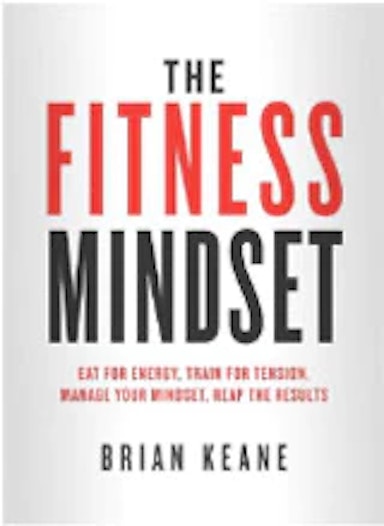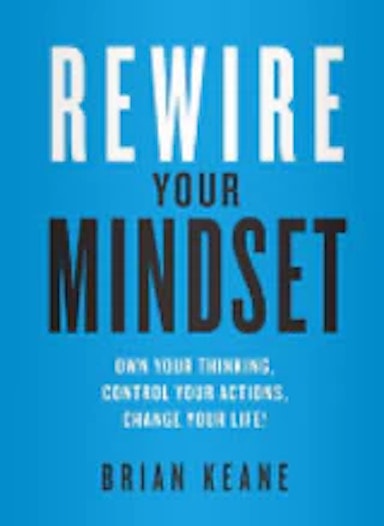The three biggest mistakes I made trying to combine bodybuilding and GAA
- By Brian Keane
For anyone following me a while you know that I completely ruined my body doing a bodybuilding program in the height of football career- granted, I looked good but my performance was the worst its ever been and I felt like I was getting injured every time I played a game.
I actually designed my entire Lean Body Program with the ‘younger’ me in mind and is based around using the best principles from hypertrophy (for shape and size), metabolic conditioning (for aerobic capacity) and strength and conditioning (for strength and performance) so you can get the best of every world.
However there are some glaring mistakes I made throughout my twenty five years of playing GAA and over thirteen years of gym training that will hopefully support you on your journey to a leaner, more muscular and athletic physique whilst improving your GAA performance.
Mistake #1 Eating Like A Hardcore Bodybuilder
This was probably where I made the biggest mistake; I didn’t understand that eating for performance was very different to eating for aesthetics or ‘for look’. When I started bodybuilding first (at 17), I also followed all the bodybuilding diets that were popular at the time (normally low carb, moderate fat and high protein); I was very much ‘if the magazine says its true, it must be true’ kind of guy and followed each diet gram for gram (I’ve since learnt that magazines are there to sell copies and don’t necessarily have your best interests at heart).
Granted it did work and I got significantly leaner but my football performance suffered dramatically; I went from playing county under age, making top college teams and a regular starter with my senior club to struggling to make every single team- all in the space of 12 months. Why? What had happened? Well one, my training was completely out of sync with my goals (which meant I kept getting injured) but more importantly, my energy levels had dramatically dropped from the low carbs and impacted my performance and concentration to a detrimental degree (from a sporting standpoint).
What To Do: Truthfully, it’s only in the last five or six years that I’ve learnt the difference between how to eat for performance and how to eat for ‘for look’. Even though your body can convert protein to glucose (by a process called glucogenesis)- it’s a terrible energy source for an athlete; its like putting really cheap gas into your car; sure it will move, but it’s likely to break down 5 miles into the journey.
Increasing fat works well and although fat has several incredible benefits including supporting hormones (testosterone in particular), improving satiation and lubricating joints to reduce inflammation and decrease your risk of injury- its not going to be the most optimal macro nutrient as an athlete.
It’s true that you can feel great and have good energy levels on a high fat/protein diet but you also need to keep glycogen stores (stored carbohydrate) full for big games and intensive pitch sessions. The truth is, the combination of rotating fats and carb cycling or ‘carb loading’ to keep glycogen stores full around big games or your hardest gym sessions is where the real gold for GAA players lies.
GAA Lean Body: To give you an idea of how you would manipulate carbs and fats to suit your goals, first its important to get clear on what your goals are – for example, my GAA program has a full questionnaire that you fill out before you start your program, this allows me to make sure that your goals is in exact alignment with your physique and performance goals.
For example, if you are footballer looking to add a lot of muscle, get stronger and improve performance, your nutritional plan is going to be very different from hurler looking to lose a lot of body fat, tone up and get faster.
If your goals are to get bigger and add more muscle, not only will your calories be higher (between 3,000kcal and 3,500kcals is a good start) but your carbs will be higher too. The same will apply if you are looking to tone up and lose body fat, only your calories and carbs will be lower (the numbers will be dependent on your program, your gender, your specific goals etc.)
I generally keep the exact same ‘carb loading’ ritual for my ‘in season’ as to my ‘off season’, the only difference is that I carb load around my leg day as opposed to my weekend game. Not only does this keep your metabolism firing and elevated (through cycling your carbs) but it means that my energy levels never slump for my hardest session of the week.
Mistake #2: Training Exactly Like A Bodybuilder
I talked about how my energy levels dropped dramatically from reducing carbohydrates for long periods of time (trying to look like a bodybuilder/fitness model) and how that was probably the number #1 reason my performance dropped.
True, my energy levels did plummet as I never replenished my glycogen stores (stored carbohydrates) after intensive training sessions and games but there was another factor that played an major influence. Training like a bodybuilder.
I actually received gym membership as a present for my 16th birthday; as I had already decked out my room with dumbbells, barbells and benches since the age of 13, my mum figured that gym membership was a solid gift, it was. I went every single day after school, regularly thumbing the 20 miles (it was a lot easier 15 years ago) to and from each gym session.
I remember my first day stepping inside a gym and feeling like a kid in a candy store, all the machines i had seen in magazines were right in front of my eyes! I quickly got to work using every single one – drawing up programs by amalgamating ideas from every magazine that I owned. I remember thinking this was going to make me the ‘ultimate GAA player’ – I was going to be big, lean and ripped like the guys on the cover of the magazines AND I was going to be fitter and stronger than everyone i came up against on the field.
I trained for about two years with no major negative effects, even though I was getting stronger, I did notice that my groins and hamstrings were getting a lot tighter than usual but nothing too drastic. Then, as if all at once, BANG- every lower body muscle started to pull, tear and rip. I went from being a 16 year prospect (I made my senior debut against Corofin at 16 who were Senior Champions at the time) to struggling to make county, college and even club teams by 18.
First my groin and my hamstrings, then I tore both my quads whilst playing with the Galway U-21’s in pre season. It took me nearly a year to recover. What had I done wrong? I was in the gym 5 or 6 days a week, I thought i was the fittest and strongest on every team (certainly for my age) but i couldn’t seem to make it through 40 mins of any game and I could only do half of every training session before sitting in an ice bath for an hour.
The reality was, I had spent two years doing bodybuilding style workouts – standard three sets of ten reps in one plane of motion (i had chest day, back day, leg day etc) but there wasn’t a plyometric in sight, no functional moments to get my glutes firing, not even a basic recovery strategy – I actually thought recovery meant 15-30 seconds of stretching each muscle at the end of every session.
What To Do: Firstly, don’t make the same mistake as me and assume that a hypertrophy or ‘bodybuilding’ program is going to make you better at football or hurling- on the contrary, it can actually hinder you if you don’t utilise those parameters correctly. The key is using the right training strategies in the right order.
GAA Lean Body: To give you an idea on how you should structure your workouts, its important to know that there is a way to look like a fitness model/bodybuilder/cover model AND massively improve performance, speed and strength. How you structure your workouts is key.
In my Lean Body Program, I’ve combined hypertrophy (for shape and size) with metabolic conditioning (for aerobic capacity and strength) alongside strength and conditioning (for speed and performance) with a myofasicial release, hip flexor loosening and trigger point tension release recovery strategy (to reduce the risk of injury and muscle tightness) – the key is combining all four together.
Depending on your specific goals, the focus will be on what you need to prioritise i.e. hypertrophy, strength and conditioning if size and strength is your primary goal or metabolic conditioning and hypertrophy if fat loss and speed is your goal.
When training for your in season or off season, make sure to combine all the methods above to get the best of every world. I recommend focusing on your compounds (bench press and rows for example) for strength, whilst also incorporating movements that get your glutes to fire and build explosiveness (barbell box squats, box jumps, floor pop ups, plyometric push ups etc).
Mistake #3: Using Bodybuilding Supplements For GAA (Not Focusing On Recovery)
I talked about how using the wrong systems can enormously increase your risk of injury (I tore both my quads in a pre season training sessions) and how a reduction in carbohydrates and muscle glycogen can run your system into the ground as a GAA athlete.
The last piece of my ‘mistake puzzle’ was using bodybuilding supplements for GAA. To be completely transparent, I was utterly blinded by what the magazines told me and I spent every spare penny on fat burners, weight gainers and the newest ‘game-changing supplement’ – which was everything from a carb transporter to a new version of creatine that just hit the market.
The reality is, there are four or five ‘go to’ supplements that will work incredibly well to build muscle, lose body fat or improve performance; the key for any GAA player is using supplements that speed up recovery. The better your recover, the harder you can train which in turn leads to greater output, returning a more skilled, stronger and fitter athlete thus tremendously increasing overall performance (muscle building and fat loss follow the same logic).
Controversially, I’ll even go as far to say, with the exception of some exceptionally genetically talented individuals– that the only real difference from the highest-level GAA players and the normal club player is their work ethic and improved recovery.
Think about the best game you have ever played or the hardest training session you ever had – the ones where you ran yourself into the ground and took every single tackle? You were probably sore for days after it- but can you imagine performing at that level day in and day out because you were recovering fully? Imagine the ‘snowball effect’ for your performance (and physique) from doing that every single day.
That’s where your supplements come in; they can massively speed up your recovery (assuming your nutrition is on point of course) and that’s how they can give you an edge over the rest of the pack.
What Supplements Do I Need?
There are some great GAA supplements like creatine that will help make you stronger in the gym which can have a direct impact for strength on the pitch and beta alanine which can help buffer lactic acid so you don’t get that massive build up during training, gym sessions or games but the truth, the difference between the good and the great is their ability to recover between sessions.
The better you recover, the higher level of output you can put out each time. Think about it this way, who would rather play against- the person who trains on the pitch twice a week and plays the game at weekend or the person who does that plus another 3 or 4 gym sessions focused on firing their glutes to make them faster, metabolic conditioning to make them aerobically fitter and core work to break through tackles more effectively. I know which one I’d prefer to play against.
The reality is, when following the right program, effort = results – we see it time and time again at inter county levels; the top players are rarely the ones with the most natural talent – they are the ones that put in the most work and recover better than everyone else.
Post Workout Recovery Is Crucial
Nutrition is always going to be number here, you want to replace glycogen stores (carb stores) as soon as you finish any intense session so that you are not running on empty (fat stores) in the following days session. The two supplements you want to add to your post workout regimen (pitch and gym) are a good absorbable protein powder and BCAA’s.
Again, depending on each persons gaols, their supplement requirements will be different – for example in my Lean Body Program, if muscle building is the primary goal, I add creatine and better alanine pre and/or post workout – but the two recovery supplements that are in all versions of my plan are whey protein and BCAA’s so I’ll explain them below.
Protein and BCAA’s Post Workout
The food that I think has the most complementary affect on your body is protein; carbohydrates are great for athletes and keep glycogen stores full but nothing comes close to helping you add muscle, lose fat and repair from workouts like protein.
In every variation of the program, protein is consistent in each meal (it’s the building blocks of muscle) and as whey protein is absorbed at a must faster rate, it can be timed to flood your muscle with amino acids to speed up recovery post workout. Whey is a complete protein (it has all the essential amino acids that your body cannot make itself) but its real stand out is its natural level of BCAA’s. If you have listened to any of the first three episodes of my podcast, you see that BCAA’s features in the fat loss, muscle building and GAA episode. It really the king of all supplements.
The Mistake GAA Players Make With BCAA’S
The major mistake I see with GAA players is they keep their BCAA’s doses too low i.e. they only use the BCAA’s that’s naturally occurring in whey protein. If you want to double or even treble your muscular recovery; start supplementing with BCAA’s before and after you train ON TOP of your whey protein.
A large percentage of dietary amino acids are oxidized and wasted even before reaching the circulatory system. The exceptions to this pattern are the BCAA’s; over 80 per cent of dietary content of leucine, valine and isoleucine (the three ingredients of branch chain amino acids) reaches circulation. Whey protein is so naturally high in BCAAs’, that’s why it works so well but adding another 5-10g (depending on bodyweight) pre and post workout can double or even treble your muscular recovery.
How To Use BCAA’s
Adding 5-10g of BCAA’s to your pre, intra or post workout (all at once or split over the three) can work wonders for recovery. Personally I always have 3-5g of BCAA’s first thing in the morning too
Assuming you have your training and nutrition in alignment with your goals, speeding up your recovery is going to have a massive impact on your performance (in the gym and on the pitch) so make sure to have the right plans in place.


